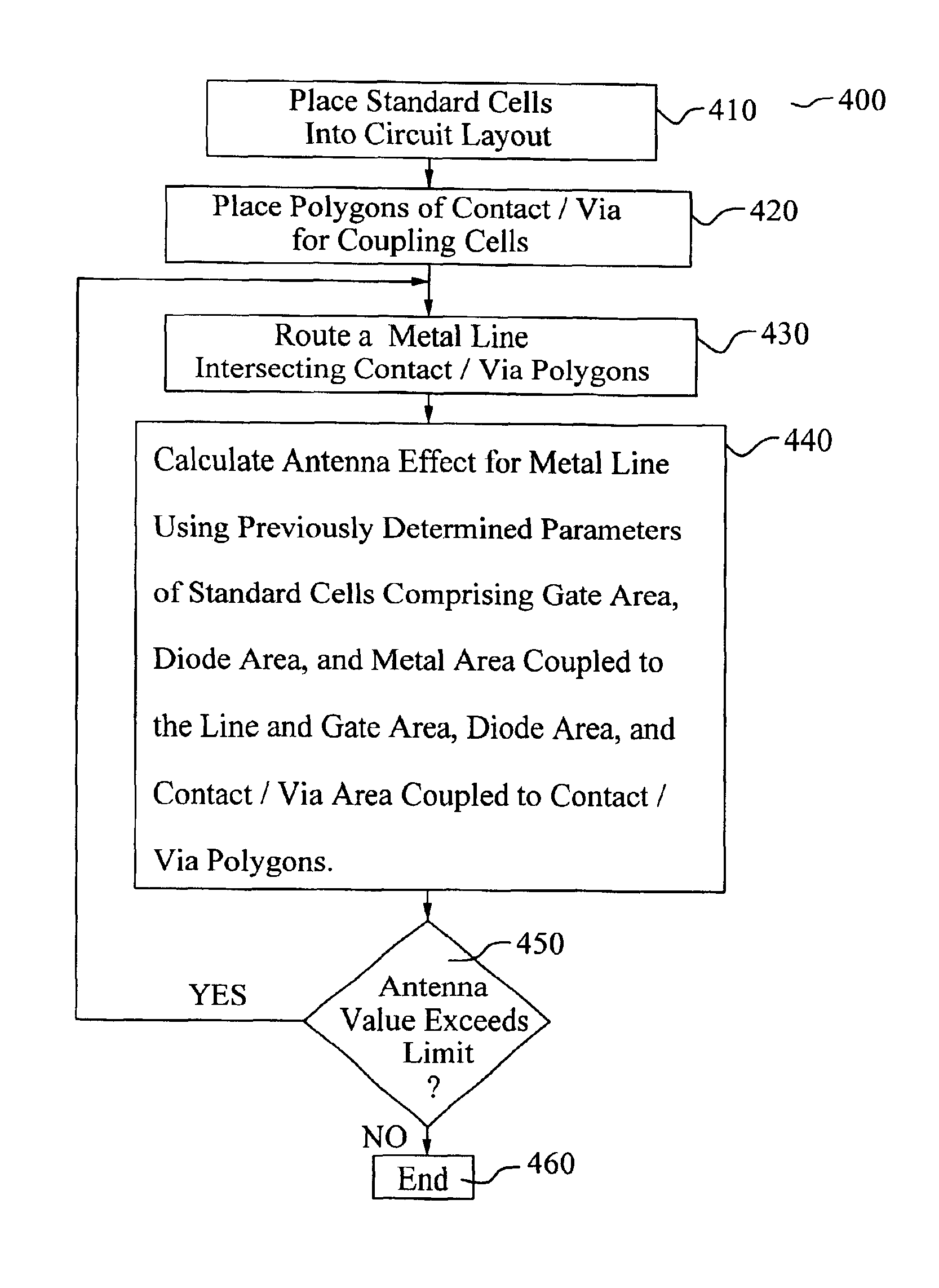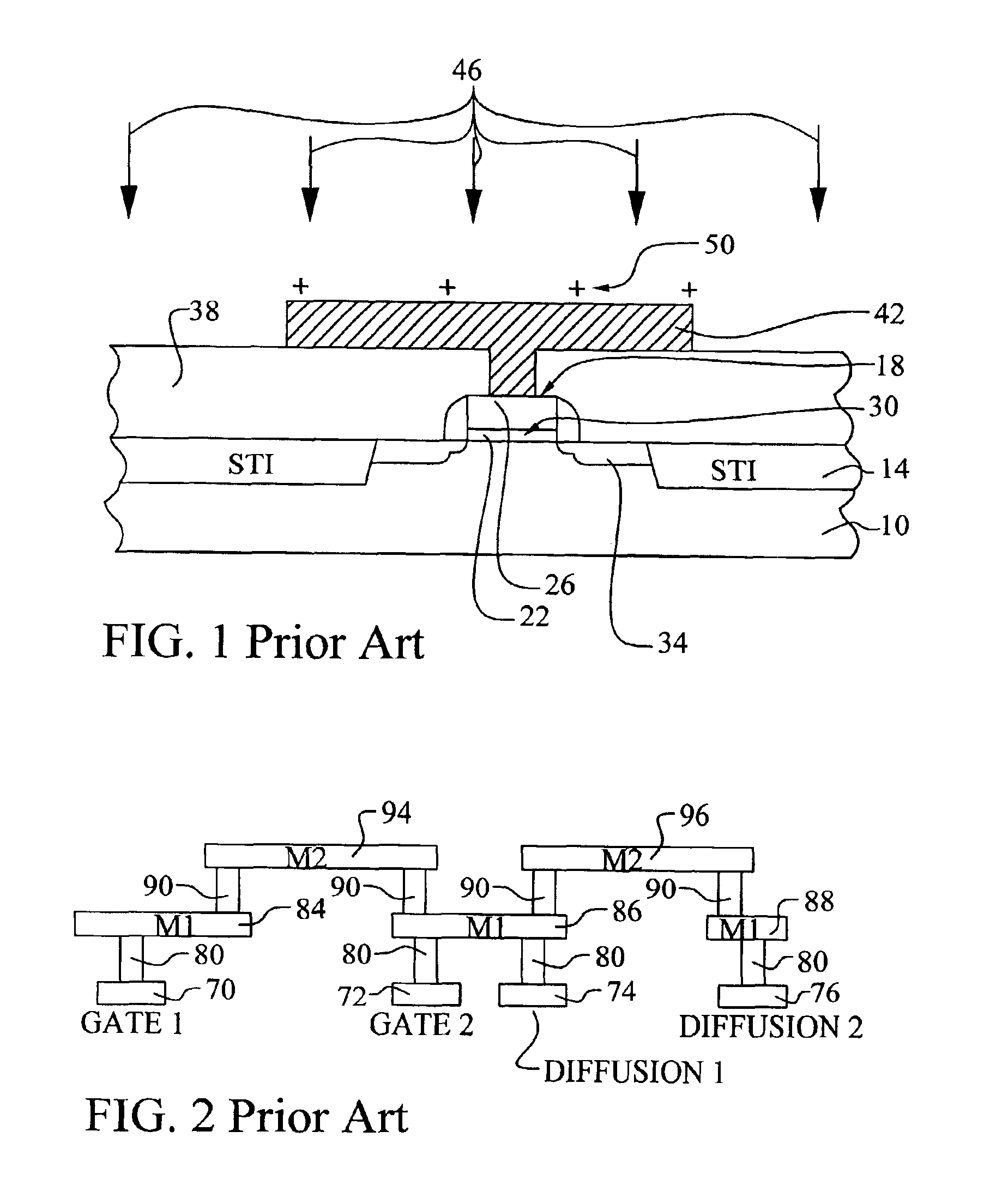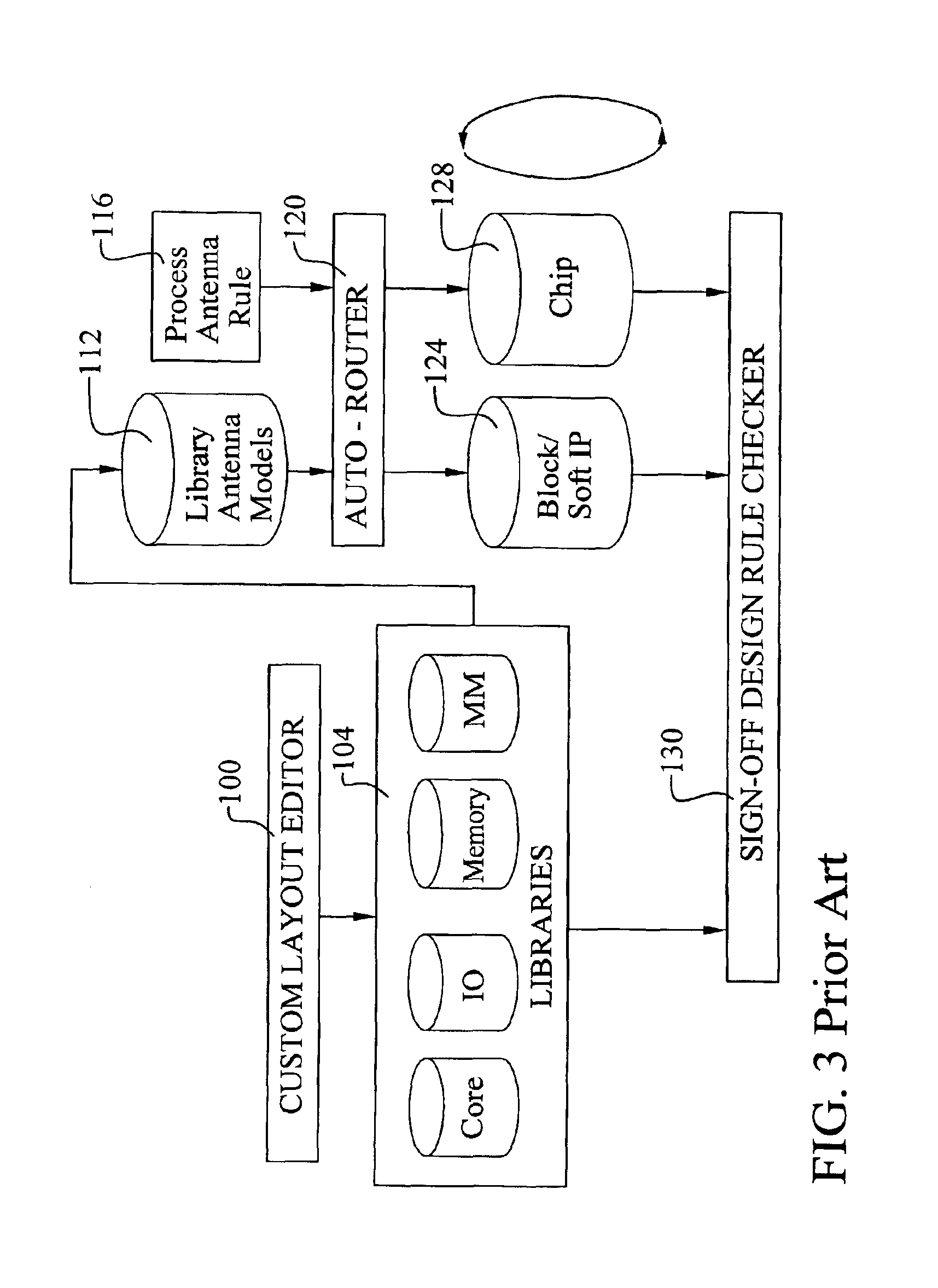Methodology of generating antenna effect models for library/IP in VLSI physical design
a technology of physical design and antenna effect, applied in the field of automatic design methodology, can solve the problems of large voltage potential in the film, film charging, non-uniformity in the plasma, etc., and achieve the effect of effectiv
- Summary
- Abstract
- Description
- Claims
- Application Information
AI Technical Summary
Benefits of technology
Problems solved by technology
Method used
Image
Examples
Embodiment Construction
The preferred embodiments of the present invention disclose a method to extract antenna effect parameters from a standard cell or block of an integrated circuit device prior to placement and routing. The extraction method systematically analyzes the cell layout to generate parameters corresponding to each pin connection of the cell. These parameters are then available to a placement and routing program to facilitate more accurate calculation of antenna effect ratios and limits for each routed signal line. A method to use these parameters in the routing of signal lines is also disclosed. It should be clear to those experienced in the art that the present invention can be applied and extended without deviating from the scope of the present invention.
Referring now to FIG. 6, the preferred embodiment of the present invention is illustrated. Several important features of the present invention are shown and discussed below. A method 300 to determine parameters from the layout of a standar...
PUM
 Login to View More
Login to View More Abstract
Description
Claims
Application Information
 Login to View More
Login to View More - R&D
- Intellectual Property
- Life Sciences
- Materials
- Tech Scout
- Unparalleled Data Quality
- Higher Quality Content
- 60% Fewer Hallucinations
Browse by: Latest US Patents, China's latest patents, Technical Efficacy Thesaurus, Application Domain, Technology Topic, Popular Technical Reports.
© 2025 PatSnap. All rights reserved.Legal|Privacy policy|Modern Slavery Act Transparency Statement|Sitemap|About US| Contact US: help@patsnap.com



